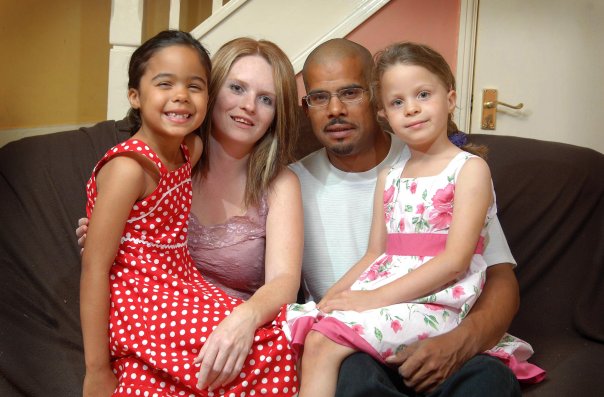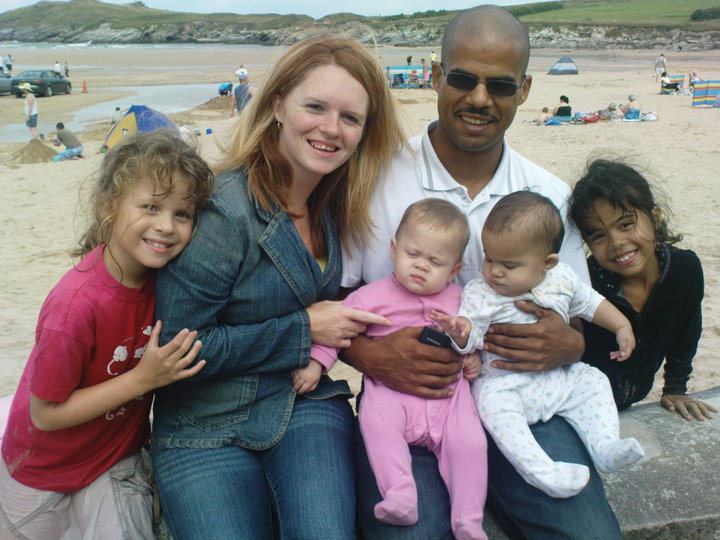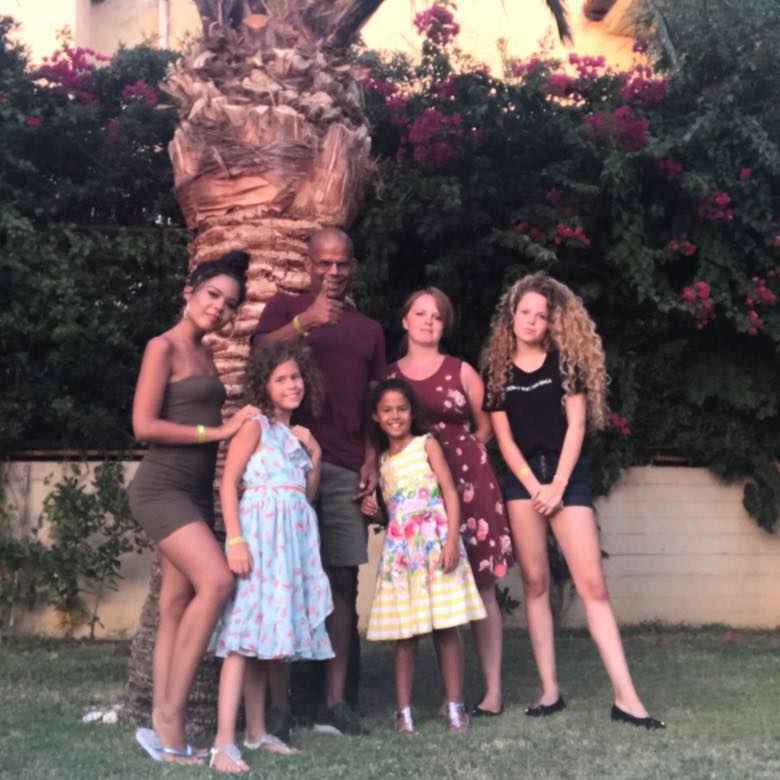Against Million-to-One Odds, This British Family Defied Genetics, Not Once, But Twice
When Hayleigh and Lauren Durrant walk into a room, people often pause. It’s not just because they’re twins, but because one sister has a fair complexion with red hair and blue eyes, while the other has dark skin and curly black hair. Passersby, friends, and even acquaintances frequently ask the sisters to prove they’re related, let alone fraternal twins.
What’s even more astonishing? Their parents, Alison Spooner and Dean Durrant, gave birth to another pair of fraternal twin girls seven years later, also biracial, with one child resembling each parent.
That makes two sets of black-and-white twins, born to the same couple. And they remain the only known family in the world with this extraordinary distinction.

Genetics at Play: The Science Behind the Spectacle
Biracial twins are a rare but scientifically possible result of fraternal twin pregnancies, where two separate eggs are fertilized by two different sperm. When the parents have contrasting racial backgrounds, like Alison, who is white with red hair and blue eyes, and Dean, who is Black and of West Indian descent, each egg can inherit a unique combination of genes. The odds? Experts estimate them to be about 1 in 500,000.
Dr. Sarah Jarvis, a fellow at the Royal College of General Practitioners in the UK, explains, “Even non-identical twins aren’t that common. Non-identical twins from mixed parents, of different races, less common still. So, to have two eggs fertilized and come out different colors, and then for that to happen again? That’s one in millions.”
Their first set of twins, Hayleigh and Lauren, was born in 2001. One twin took after mom, the other after dad. Then in 2009, the miracle repeated itself when Alison gave birth to Leah and Miya, who also inherited dramatically different complexions.

Public Reaction and Private Realities
From the beginning, life for the Durrant twins was filled with curiosity and, at times, scrutiny. As young girls, Hayleigh and Lauren were often met with skepticism, even disbelief.
“Some people can be really rude,” Hayleigh recalled in an interview with The Sun. “They’ll say, ‘You’re lying, you aren’t twins , prove it!’ So we’ll reel off the same address or pull our passports out.”
For Lauren, it’s always been a bit of a paradox. “People think we’re just really close friends,” she shared. “It’s funny how people define family based on looks.”
Despite their differences, the bond between them was always strong. They shared toys, television shows, and after-school snacks. They would finish each other’s sentences and even mirror each other’s thoughts, a common twin trait that transcended skin tone or appearance.
When the younger set of twins arrived, Leah with mom’s complexion, Miya with dad’s, Hayleigh and Lauren quickly took on the role of role models.
“The younger ones idolize the older ones and are always copying them,” Dean said. “It’s like having two Mini-Mes.”
Two Generations of Twinship
Today, all four girls are growing into their own. At the time of their 2019 interview, Hayleigh was pursuing drama and sociology, while Lauren had gravitated toward art and business studies. Though their college paths diverged, their relationship remained intact.
“We say the same things at the same time and finish each other’s sentences,” Lauren said. “We’re so the same in some ways, even now.”
Meanwhile, Leah and Miya share a bedroom and an affection for their older sisters.
“I like my older sisters. We want to be like them when we get grown up,” Leah said.
“They teach me that it’s the best thing in the world to have a twin sister, even if you are not identical,” added Miya, smiling.
Though the younger pair look more alike now than their older siblings did at the same age, their early years mirrored the same reactions, double-takes at the supermarket, side glances at school, and endless questions.
Alison, who works as an office manager, said one woman once assumed that one of the children was her biological daughter and the other was her friend’s child. “It took me some years to understand the science of how they could appear so different,” she admitted.
Dean, a professional paver, echoes that sentiment. “Even now, people are shocked. But to us, they’re just our daughters. They’ve always been best friends.”

In the Spotlight and in the Record Books
The Durrant family’s story captured global attention when they were recognized by the Guinness World Records for being the only known family to have two sets of biracial twins. For a family that considers their story “just normal,” the fame came as both a surprise and a celebration.
“We were like celebrities when we were kids,” said Hayleigh. “Everyone wanted pictures with us and would ask us how it felt to be twins but different.”
Lauren added, “To us, it wasn’t weird. It was just life.”
Their story has been featured in numerous interviews, media outlets, and documentaries, not because of fame, but because of how naturally and joyfully they live out a truth that defies conventional assumptions about race and identity.
What It Means to Be Family
In a world often caught up in appearances, the Durrants are a living lesson in what really matters.
Love. Bond. Shared experiences. Unconditional understanding.
The sisters don’t just tolerate each other’s differences, they embrace them. From fashion choices to university paths, from childhood playdates to grown-up aspirations, their journey proves that family isn’t something to be explained by science alone.
It’s something to be cherished.
“They are best friends and close in every way, apart from looking different,” Alison said. “That’s what makes them, and us, special.”
Final Thoughts: Ordinary Miracles
While scientists may point to genes and probability, the Durrant family story carries something far deeper. It’s a tale about individuality and unity, of difference and deep connection. For anyone who has ever struggled to fit in or explain who they are, the Durrant sisters offer a powerful message:
You don’t have to look alike to belong together.
And sometimes, just sometimes, lightning really can strike twice.
Featured image from Facebook: Dean Durrant

